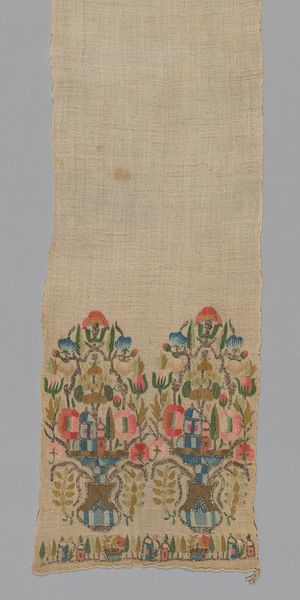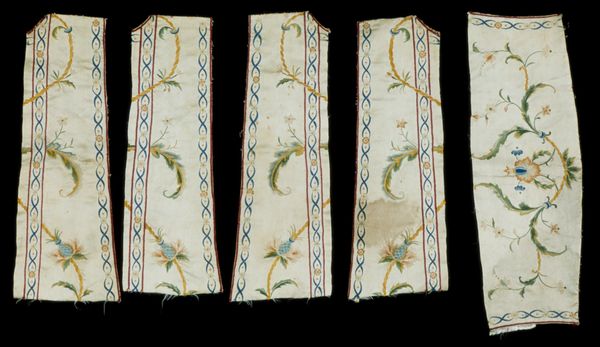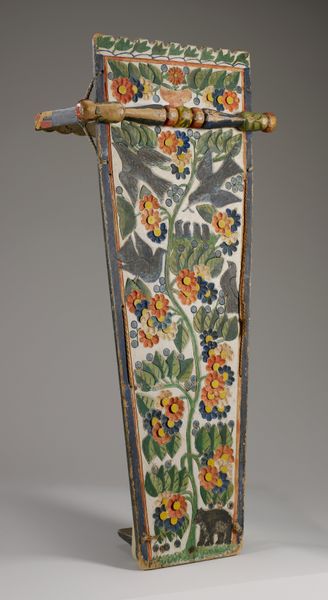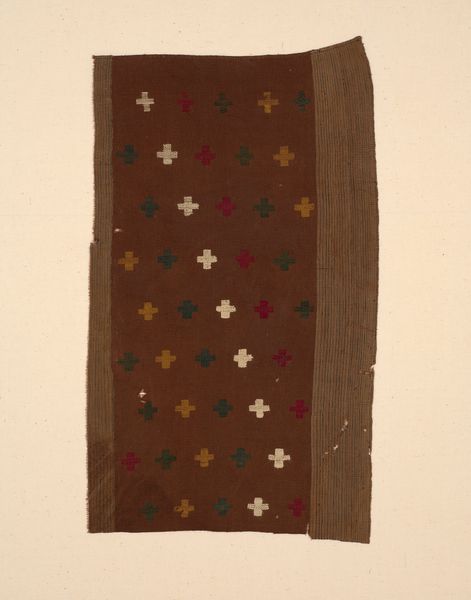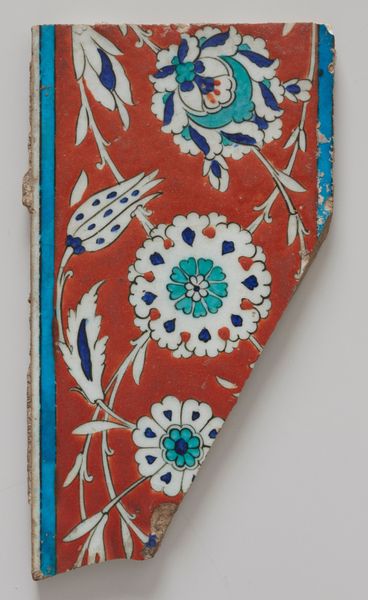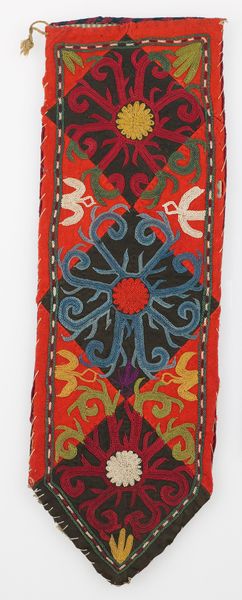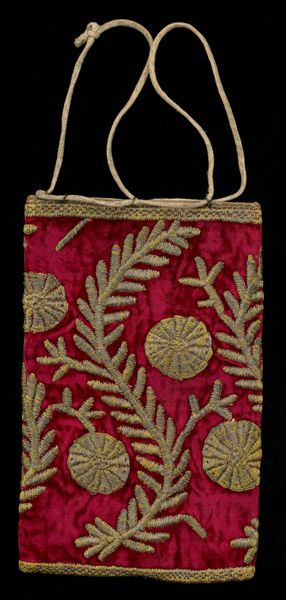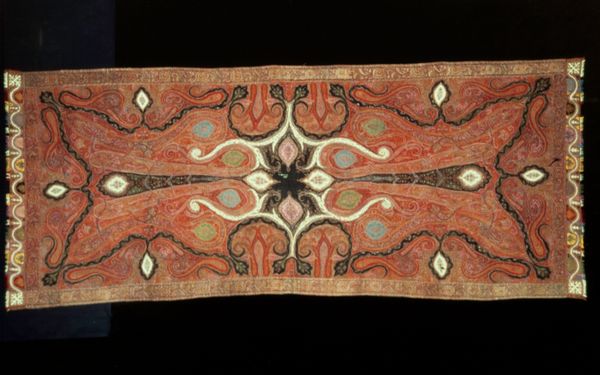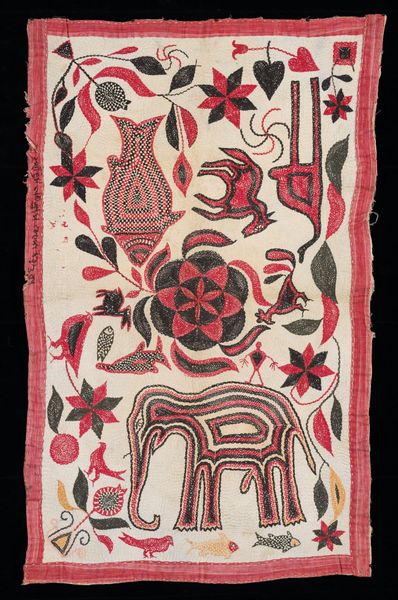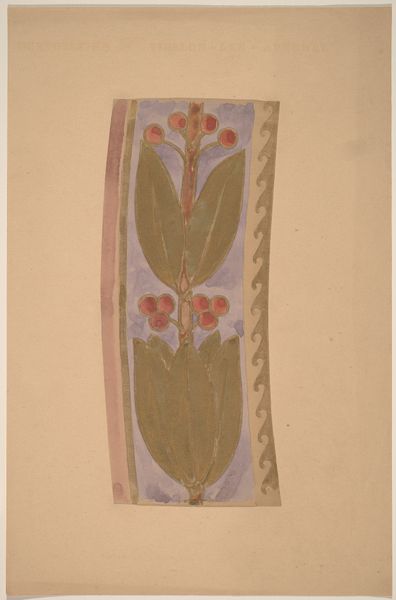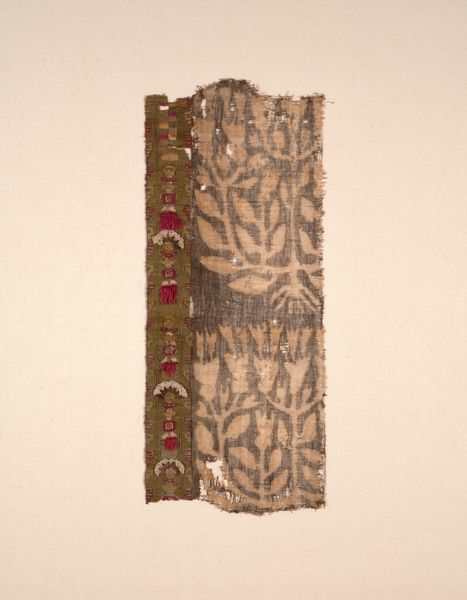
painting, textile
#
painting
#
textile
#
geometric
#
indigenous-americas
Dimensions: 15 1/8 x 7 x 2 in. (38.42 x 17.78 x 5.08 cm) (without ties)
Copyright: Public Domain
This container, called a Parfleche, was made from rawhide by an artist of the Hunkpapa Lakȟóta, a Native American tribe, and is now held at the Minneapolis Institute of Art. Parfleches are traditionally used to store and transport food or other items and this piece is notable for the stylized plant motifs painted on its surface in red and blue. The geometric borders indicate the work of a woman, but there is some evidence to suggest that these conventions began to blur during the 19th century. The history of these objects, however, is intertwined with the darker history of settler colonialism in North America, where institutions like museums have actively displaced Indigenous cultural production. Indeed, the acquisition of cultural objects like these cannot be separated from that history, and our knowledge of their use will always be filtered through the lens of institutional and historical context.
Comments
minneapolisinstituteofart almost 2 years ago
⋮
It is unusual for pictorial decoration to appear on rawhide containers; only a few exist that were created in later years. This object shows a chokecherry leaf and berry indicating that the container was possibly used for gathering chokecherries, an important ingredient for preparing food among Plains Indian cultures. The berry was often used in pemmican, a mixture of dried meat, berries, and fat that was easily stored and transported; it provided a significant amount of nutrition for Plains people, particularly in the winter months. In addition, women of some tribes used chokecherry juice to size their rawhide containers, which protected the rawhide from wear and exposure to the elements. The painted design therefore reflects the container's function as well as the elements that went into its creation.
Join the conversation
Join millions of artists and users on Artera today and experience the ultimate creative platform.

